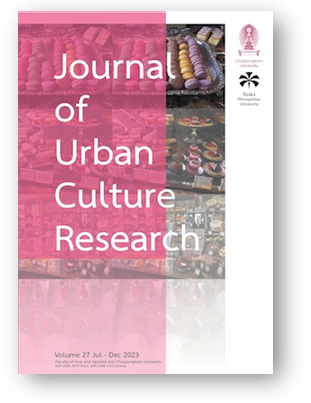Sorginak, Bruxas, Meigas, Bruixes… Performing Feminisms in Spanish Folk Revival
DOI:
https://doi.org/10.14456/jucr.2023.28Keywords:
Folk Revival; Popular Music; Cultural Identity; Gender Imaginaries; FeminismAbstract
The imaginaries constructed around witches and witchcraft throughout history have reflected non-accepted social conduct and behaviors. Assuming women’s bodies, knowledge, and social agency as a depiction of the savage, strange, and taboo figure. In this way, the witch linked to the feminine and negative aspects has been recently reappropriated and reshaped by feminism in the last decades. In this study case, I examine how Spanish revival folk has reflected female gender models through musical practices. The main goal of folk revival is revitalizing a countercultural movement, which shows a context of a clash of ideologies and identities. Identities and ideologies related to feminism are acted out through the aesthetics of performance and its staging. These expressive practices could be termed feminist revival folk due to the implication of the musicians with the feminist agenda. For this purpose, it is presented an analysis of cases from different bands, all of them characterized by their bonds with tradition, modernity, and gender, as it is the case of Habelas Hainas, Huntza, Punkiereteiras, Roba Estesa or Tanxugueiras. The witch as depicted by modern feminism, is used in this artistic and social movement as a rhetorical resource. The aesthetics are performed on stage and in music videos as a way of self-identification with these historically silenced, rebel, independent, and free women.
Downloads
Published
How to Cite
Issue
Section
License

This work is licensed under a Creative Commons Attribution-NonCommercial-NoDerivatives 4.0 International License.
Authors authorize the JUCR to publish their materials both in print and online while retaining their full individual copyright. The copyright of JUCR volumes is retained by Chulalongkorn University.
The views and opinions expressed herein are those of the individual author(s) and do not necessarily reflect the policies or opinions of the Journal (JUCR), it editors and staff, Chulalongkorn University, or Osaka Metropolitan University.








